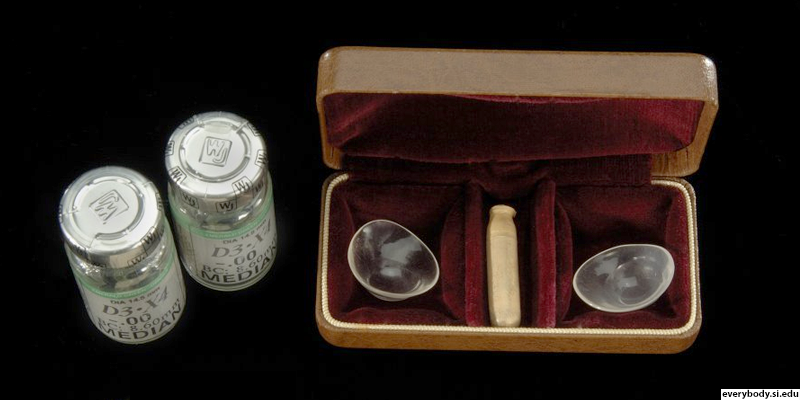The History of Contact Lenses: From Glass to Silicone Hydrogel
17th Aug 2023

Herschel proposed grinding a glass contact lens to fit the cornea in 1823. Image source: Lenstore Hub
Contact lenses have come a long way since their inception, revolutionising the way people correct their vision and enhancing their quality of life. From humble beginnings with glass lenses to the modern marvels of silicone hydrogel, the journey of contact lenses is nothing short of remarkable. Join us as we delve into the fascinating history of the invention of contact lenses.
The Early Innovations (Late 19th Century)
The concept of contact lenses dates back to the late 19th century when glass lenses were first used to correct vision. In 1887, a German glassblower named F. E. Muller created the first glass contact lens, although it was quite uncomfortable to wear due to its rigidity and limited oxygen permeability.
Plastic Lenses Revolution (1930s)
It wasn't until the 1930s that contact lenses made a significant leap forward with the introduction of plastic lenses. Dr. William Feinbloom, an American optometrist, developed the first plastic contact lenses made from a material called polymethyl methacrylate (PMMA). These lenses were more comfortable than glass lenses and allowed for better oxygen transmission, but they still had limitations.
Introduction of Soft Contact Lenses (1960s)
The true breakthrough in contact lens technology came in the 1960s when Czech chemists Dr. Otto Wichterle and Dr. Drahoslav Lim introduced soft contact lenses. They developed a hydrogel material called HEMA (hydroxyethyl methacrylate) that was soft, flexible, and allowed for higher oxygen permeability. This marked a significant milestone as soft contact lenses offered improved comfort and became more popular among wearers.
Advancements in Disposable Lenses (1980s)
The 1980s witnessed another milestone with the introduction of disposable contact lenses. Companies like Bausch & Lomb and Johnson & Johnson developed daily disposable and extended wear disposable lenses, providing convenience and reducing the risk of eye infections. Disposable lenses gained popularity due to their ease of use and reduced maintenance.
Silicone Hydrogel Lenses (The Modern Era)
In the late 1990s, silicone hydrogel lenses revolutionised the contact lens industry once again. These lenses combined the benefits of soft lenses with the superior oxygen permeability of silicone materials. Silicone hydrogel lenses allow more oxygen to reach the cornea, reducing the risk of corneal complications and offering increased comfort, especially for wearers with dry eyes.
Today, silicone hydrogel lenses have become the gold standard in contact lens technology. They are available in a wide range of prescriptions, including astigmatism and multifocal options, providing clear vision for wearers with various visual needs.
The evolution of contact lenses, from the early days of glass to the modern marvels of silicone hydrogel, has been a testament to human ingenuity and technological advancements. As researchers and engineers continue to push the boundaries, we can expect further improvements and innovations in contact lens design, materials, and functionality.
Whether you're a long-time contact lens wearer or considering them for the first time, it's fascinating to appreciate the rich history behind these remarkable vision-correcting devices. So the next time you put on your contact lenses, take a moment to reflect on the incredible journey that has made them a pivotal part of our lives.